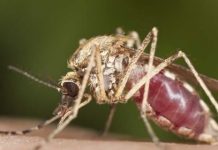l.co.zm” class=”f”>Zambia Daily Mail by Online Editor on 6/22/13
Pneumonia vaccine to reduce child mortality
 By LINDA NYONDO
By LINDA NYONDO
ELIZABETH Mukuka’s four-month-old baby girl spent 10 days at Kamwala clinic after she was diagnosed with pneumonia, a disease that kills over 10,000 children in Zambia every year.
Mrs Mukuka believes that her baby suffered from pneumonia because she was exposed to the cold weather.
“The cold weather affects the lungs and the affected child breath as if they are panting,” Mrs Mukuka, whose baby survived said.
The disease can now, however, be prevented with the PVC 10 vaccine, says Ministry of Community Development Mother and Child chief expanded programme on immunisation officer Elicah Kamiji.
Mrs Mukuka said she had not heard about the pneumonia vaccine but expressed happiness that Government now has plans to protect children from the disease.
The ministry estimates that severe pneumonia cases and in children from one month to five years is 4,668 per 100,000.
Pneumonia is an inflammatory condition of the lung affecting primarily the microscopic air sacs known as alveoli.
It is usually caused mainly by an infection with the virus or bacteria and less by other microorganisms and conditions such as autoimmune diseases.
People with infectious pneumonia often have a productive cough, fever accompanied by shaking chills, shortness of breath, sharp stabbing chest pains during deep breaths and an increased respiratory rate.
In the elderly, confusion may be the most prominent sign but the typical signs and symptoms in children under five is fever, cough and fast and difficult breathing. Pneumonia is spread mainly droplets during coughing or sneezing.
And the PVC 10 vaccine has already been launched in Itezhi-Tezhi and Kasama. The vaccine will soon be available in other parts of the country soon.
“We have started vaccinating children against pneumonia in some districts of Zambia but in districts like Lusaka, we are still training staff and we will soon start the exercise,” Ms Kamiji said.
Ms Kamiji said the vaccine will help prevent children from dying from pneumonia as one in every five deaths among young children below five years is caused by it.
And strains of pneumoccus are becoming resistant to some antibiotics, Ms Kamiji said.
Treating severe pneumococcal disease may, therefore, require second line antibiotics such as cephalosporins and vancomycin which are expensive and raises the cost of treatment.
Ms Kamiji said the pneumonia vaccine protects against severe forms of pneumococcal disease, such as meningitis, pneumonia and bacteraemia.
She however explained that it does not protect against pneumococcal diseases if they are caused by other stereo types that have not been covered by the vaccine.
“Even after full immunisation, a child may still get pneumonia caused by other organisms such as viruses and other bacteria.
However, the risk of pneumococcal disease and death can be further reduced by other measures like washing hands, exclusive breastfeeding for the first six months, reducing indoor pollution and proper treatment of symptoms, Ms Kamiji advised.
Ms Kamiji said pneumococcal vaccine can safely be given along with other vaccines such as pentavalent, polio, BCG and measles during the same immunisation visit.
Some of the side effects from the pneumococcal vaccine are irritability, crying, swelling, redness and hotness at injection site, transient fever less than 39oC and severe reactions are rare allergic reactions.
The pneumococcal vaccine should, therefore, not be administered to infants with severe allergic reaction to a previous dose, moderate or severe illness (temperature greater than or equal to 39oC) until the condition improves. But mild illness such as an upper respiratory tract infection is not a contraindication.
Ms Kamiji said that the pneumococcal vaccine is safe and effective and that it is given in three doses at the same time age as pentavalent vaccine by intramuscular injection. There are no contraindications other than previous serious reaction to vaccine.
But there is need for more sensitisation so parents can access the life-saving PVC 10 vaccine.
Mildred Lungu, a mother of three of Lusaka’s Chipata township, believes pneumonia usually affects children who are given cold foods and are bathed in cold water.
“Children can be protected from pneumonia by dressing them warmly and keeping them indoors during the cold season,’’ Mrs Lungu advised but like Ms Mukuka, she too has not heard about the pneumonia vaccine.
Annually, pneumonia affects about 450 million people which is seven percent of the world’s population and results in about four million deaths.
And although pneumonia was regarded as the captain of death by William Osler in the 19th century, the advent of antibiotics therapy and vaccines in the 20th century has seen improvements in survival.
********
FACT FILE
• Pneumonia causes 19 percent deaths in children (estimated 1.4 million children) under the age of five years every year.
• Every year, 156 million new pneumonia cases are reported and around 8.7 percent of these cases are severe and need hospitalisation.
• India reports maximum number of new cases of pneumonia (43 million). China comes second with 21 million new cases and Pakistan is third in the list with 10 million new cases.
• Every year, pneumonia causes death of 410,000 children in India.
• Streptococcus pneumonia and Haemophilus influenza are responsible for causing pneumonia in more than 50 percent of all childhood cases.
• Major infectious agents of Pneumonia include bacteria, viruses or fungi.
• Addressing environmental factors, immunisation, and adequate nutrition go a long way in preventing pneumonia.
• Although Pneumonia can be treated by using antibiotics; only 30 percent of infected children have access to the required antibiotics.
• Every day, an estimated 4,300 young lives are claimed by pneumonia (one young life every 20 seconds).
• There is a huge difference in the number of pneumonia led deaths in children in developed and developing countries. An estimated 98 percent of children who died due to pneumonia belong to developing countries.
• For every death of child due to pneumonia in developed nations, there are 2,000 children that die in developing countries.
• Only 1 out of every 5 infected children receives antibiotics for treating pneumonia
As per the results of various studies, the mortality rate of pneumonia can be decreased by using following methods.
Effective immunisation
Early diagnosis
Optimal case management
Exclusive breastfeeding for six months
Minimising indoor air pollution
Preventive antibiotic treatment in HIV infected children and Zinc supplementation. – WHO.

 JOIN DRIVERN TAXI AS PARTNER DRIVER TODAY!
JOIN DRIVERN TAXI AS PARTNER DRIVER TODAY!












Omega-3 fatty acids and Vitamin E can interact with blood-thinning medications and in themselves work like blood thinners
so you should not take them before or during surgeries. A day after Barbara Bush was hospitalized, this statement was issued:
. Then I found a way to actually use the power of the internet to make more money in one month than most
people make in a year.